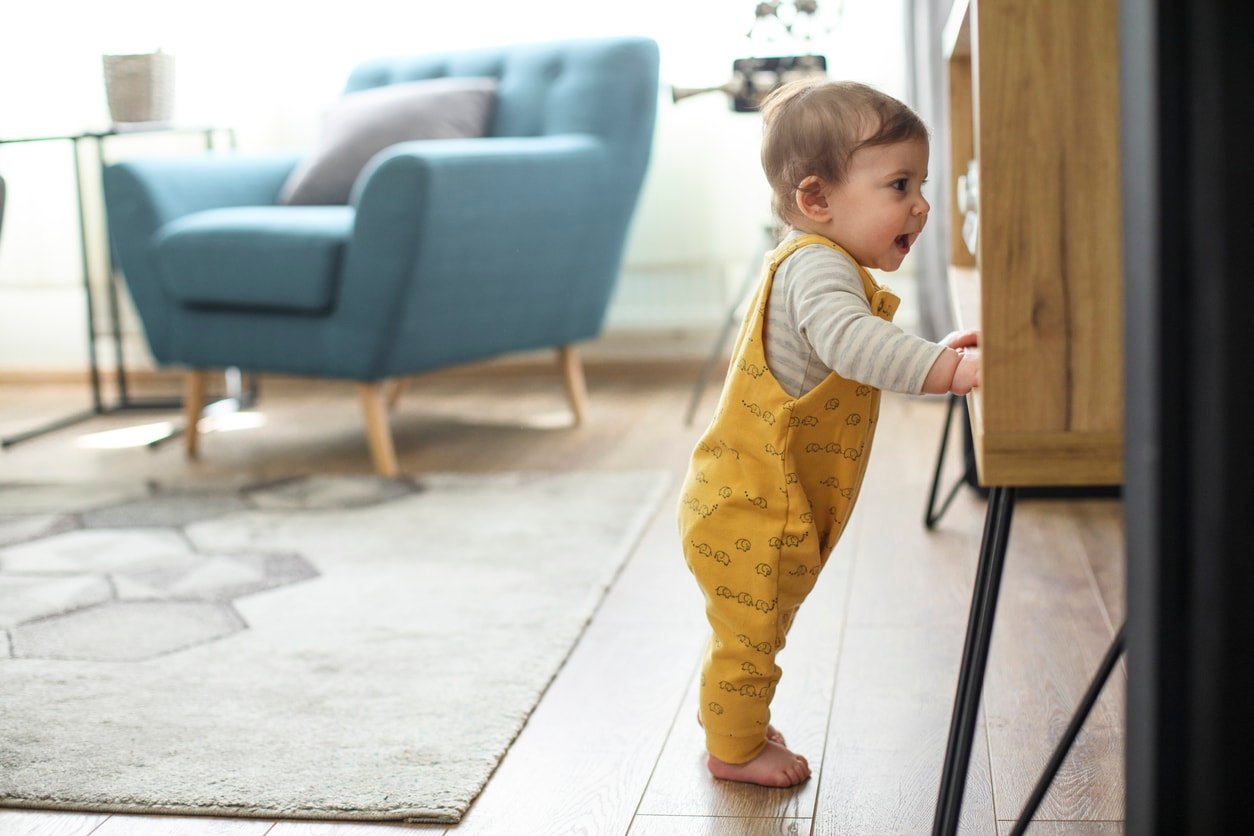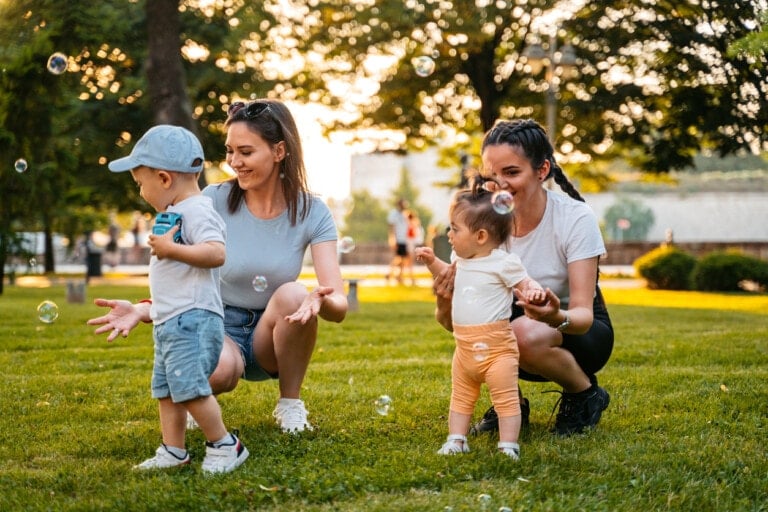Many fun and exciting milestones happen fairly quickly during the first year of your baby’s life. One of those exciting milestones is when your baby starts pulling up to stand. With every new milestone, questions about that milestone are not far behind.
Parents often wonder, “When do babies start standing?” or “At what age will my baby start pulling up to stand”? Still others will wonder, “What happens next after my baby starts to get themselves into a standing position?” If you have ever wondered these things about your baby, don’t worry. This article will help you understand this unique milestone and navigate this new time in your baby’s development.
When Should a Baby Bear Weight on Their Legs?
Before your baby starts to pull themselves up into a standing position, they must start to bear weight on their legs. As your baby approaches six months, you will notice they begin to put weight on their legs when you hold them under their arms on a hard surface. They will likely bounce on their legs as you hold them.1
During this time, you can engage your baby by showing them their surroundings and telling them more about their environment. Tell them the colors or shapes of their toys or the names of the objects they see. Your baby is inquisitive, and everything in the world is new to them, so this will be a fun and engaging way for them to play.2
When Do Babies Pull To Stand?

Once your baby has gained confidence with standing while supported, the next milestone they will reach is pulling up to stand. Many babies will start pulling themselves up to stand between nine and 12 months. Babies will pull themselves up using the furniture or another stationary object with one foot leading before the other.3,4,5,6
How Can I Help My Baby Stand?
To help your baby gain confidence and strength in their standing and walking, you can incorporate some of the following into your baby’s daily routine:4
- Allow your baby to push objects around, such as push toys.
- Hold toys in your hand a short distance away to encourage them to walk toward you.
- Allow your baby to hold your hands while they practice walking or standing.
- Place toys on the other end of the couch to encourage your baby to walk toward their toy.
- Do not use a baby walker! Even if you are keeping an eye on your baby, serious injury can occur.
What Comes Next After My Baby Starts Standing Up?
Fasten your seatbelts because once your baby begins to pull to stand, walking is right around the corner. As your baby approaches 9-11 months and after pulling up to stand using the furniture, they will start to cruise or walk around it.3
You can anticipate your baby starting to stand without support as they approach 11-12 months old. They will begin to explore standing by letting go of their support for a few seconds before lowering themselves to the floor or grabbing back onto their support.3
At the same time they are learning to stand unaided, your baby will start to take a few supported steps. They will begin to walk while using one hand to support themselves on an object or with your hand. Remember that their legs are still learning to support their weight, so falls are common but usually don’t result in injury.3
Is It Bad to Hold a Baby in a Standing Position?

Many parents hold their baby’s hands to help them practice their standing and walking skills. While it is safe to hold on to your baby’s hand as they stand or walk, pulling them off the ground by their arms is not recommended.7,8
Pulling a baby or toddler up by their arms can cause a condition known as nursemaid’s elbow. This condition most commonly happens to children under the age of 4 when they are pulled up into the air by their hands or arms. Nursemaid’s elbow happens because babies and toddlers have loose ligaments in their elbow joints. When they are lifted by their arms, it causes the bones in their elbow to move apart, and their ligament can slip between the bones and get stuck.7,8
If this happens, you may notice your baby doesn’t want to move their arm or hold it straight or slightly bent. Swelling is not always present, but the affected elbow can be tender to touch or move. If any of these symptoms occur, immediately seek medical attention for your child. Nursemaid’s elbow is easily treated with prompt medical attention.7,8
What To Do if Your Baby Isn’t Standing
One of the most important things to remember regarding your baby’s development is that each baby will reach their developmental milestones in their own time and at their own pace. These milestone steps are just a guideline to help gauge development, not a rule.
Every baby has a unique timeline for reaching milestones; some babies will reach certain milestones earlier or later than their peers. Just because your baby may not be pulling up to stand at exactly nine months doesn’t necessarily mean they are developmentally behind.
During your well-child checkups, your doctor will ask you questions and examine your baby to monitor their development. Bring any concerns to your doctor; they can help point you in the right direction if your baby needs additional help to reach these milestones.9 You can track your baby’s development using this CDC online milestone checklist.
Watching your baby learn to pull themselves up is a joyous event for you and them, and concern for their progress is expected. It is important to remember that each baby will develop at its rate, and that’s okay. Take this time to soak in the joy of watching your baby explore new areas of their environment and celebrate their newfound skills.
































